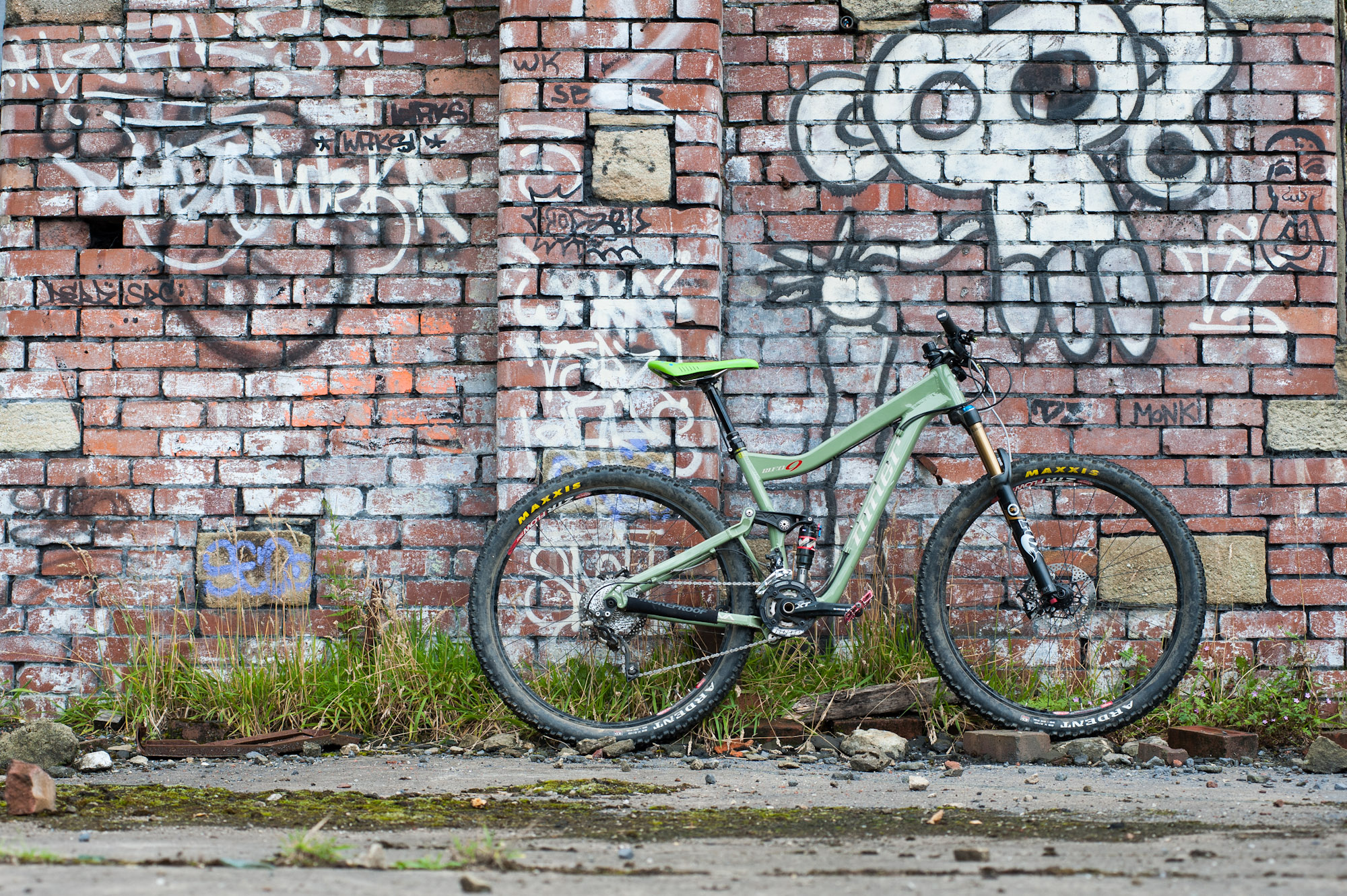You’d be forgiven for thinking that the whole long-travel 29er thing was a pretty recent development with the amount of noise being made about it. All the way back in 2009, big wheeled purists Niner released the WFO 9. Standing for ‘Wide, Full Open’ (or possibly a more expletive laden alternative) and sporting 140mm of travel, it was designed as an aggressive, all-mountain bike when those words meant 26” wheels and 160mm. Indeed, at that point, many in Britain still thought than big wheels equated retro steel hardtail, probably lacking in gears. So, three years later, how does this early adopter fare against the Johnny-come-latelies who’ve turned up to the party and decided that big wheels and bounce are where it’s at?
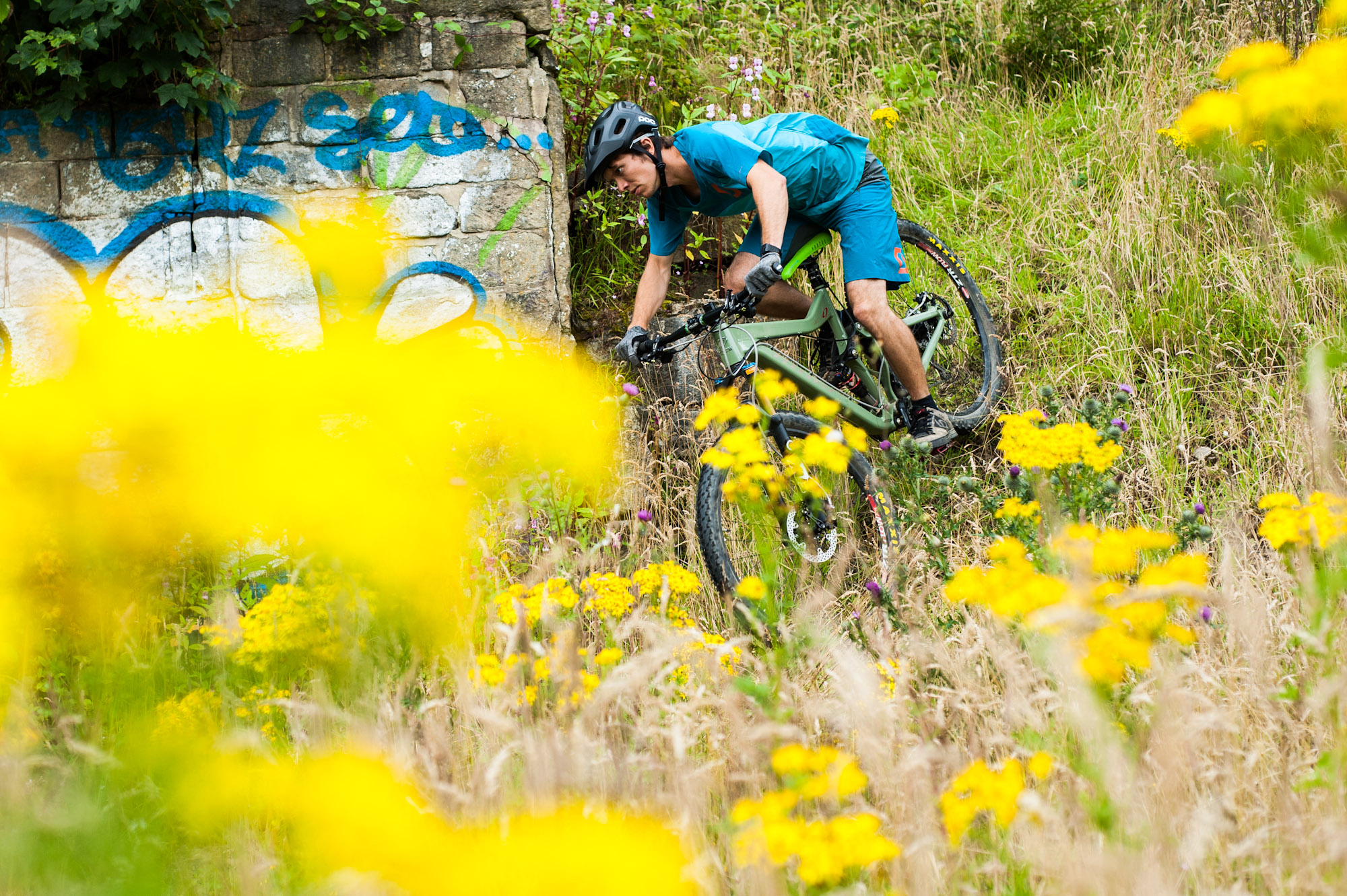
The Detail
The WFO uses a swooping hydroformed aluminium frame which, as well as having a certain aesthetic, provides a chunky front end, extra standover clearance and enough space to run a shock with a piggyback. Niner’s crystal ball must have been polished to a high gloss back in 2009 as the WFO was also an early adopter of the tapered headtube standard, the frame also has a high-direct mount mech – and the back end uses switchable dropouts for compatibility with through-axle systems, namely a 142x12mm Maxle; all features which have emerged dominant from the mass of standards.
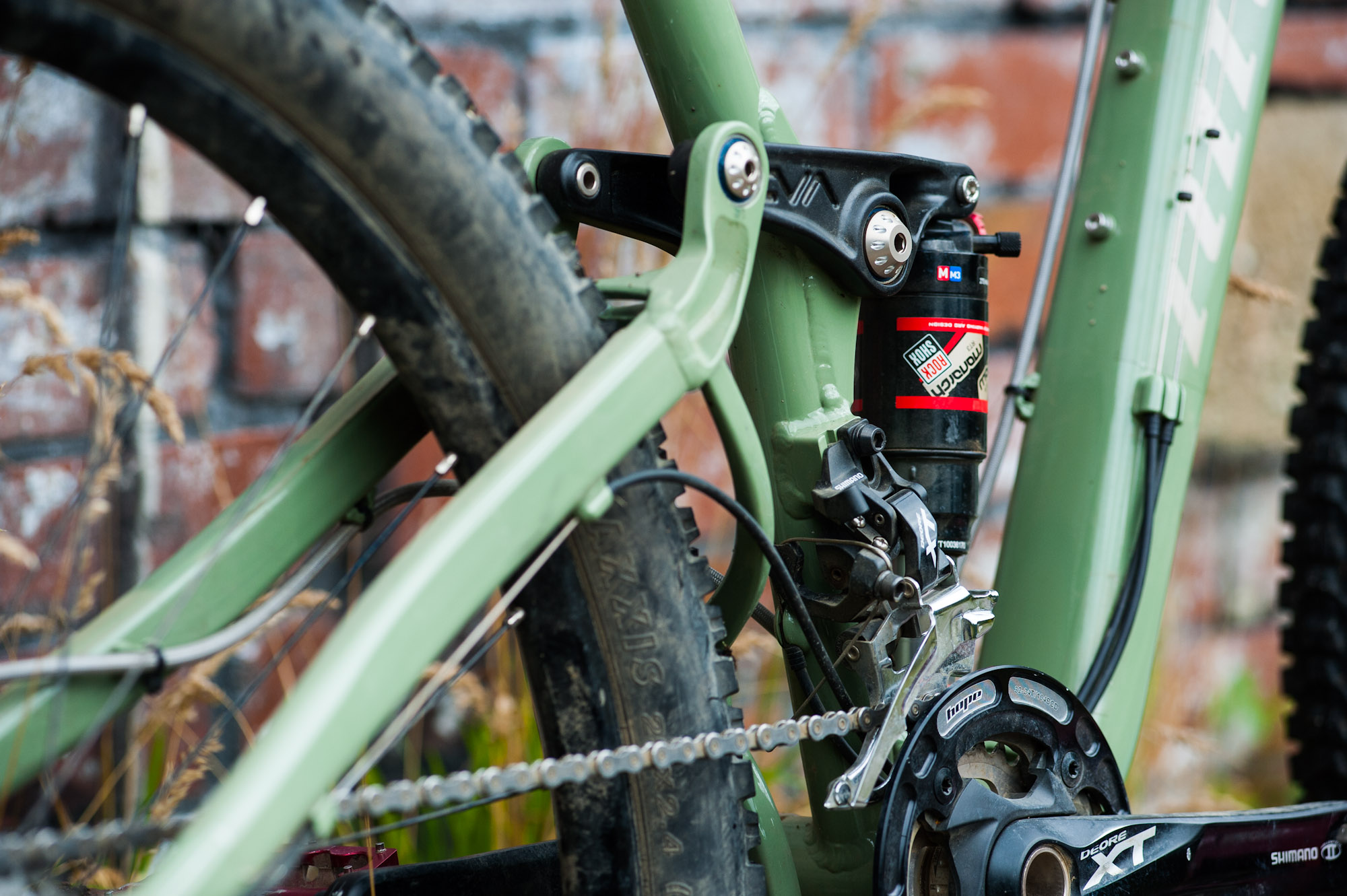
Suspension is controlled by Niner’s Constantly Varying Arc system. It’s a virtual pivot design that connects the one-piece back end to the front triangle with a pair of short forged aluminium links, all rotating on sealed Enduro Max cartridge bearings with neatly detailed covers. The basic idea behind CVA is that by positioning the lower link well below the BB, the effects of chain torque on the suspension is cancelled out and the suspension is unaffected, regardless of which gear combination you happen to be using. The lower link is offset to provide chainguide clearance for the ISCG mount too.
The frame geometry hasn’t dated badly either. The 69° head angle when paired with a 140mm travel fork – the excellent Fox 34 TALAS in this case – is on the steeper side but by no means a deal breaker and the upright 74° seat tube angle is combined with a rangey top tube. As with all long travel big wheelers, the front end is high. We’re talking significantly taller than most 200mm travel 26” bikes. DC Cycles, who kindly lent us their demo bike for this test, fitted the WFO with a set of decently wide Niner flat bars to compensate for this, a wise move potential owners should follow.
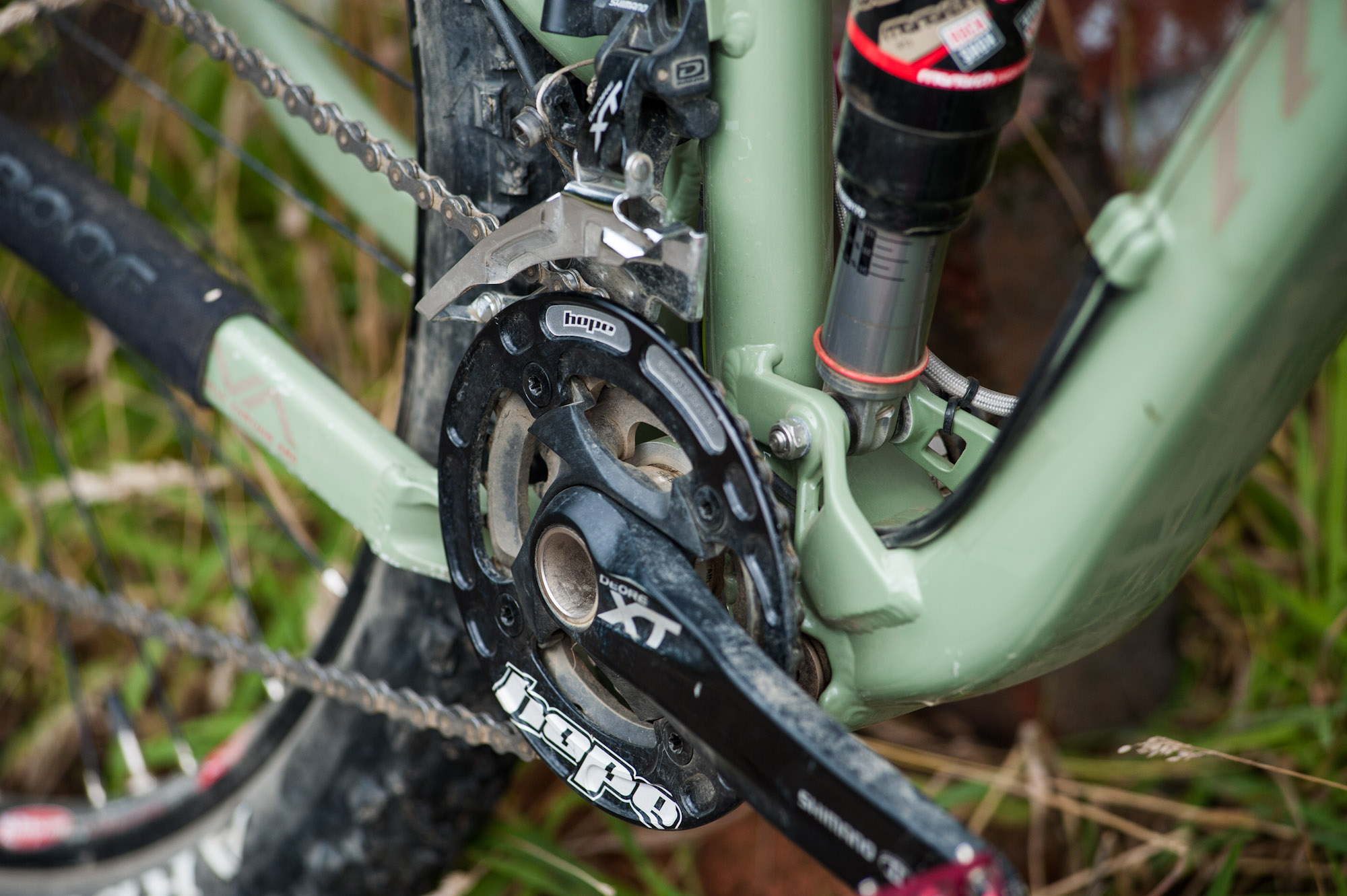
The rest of the build kit put on the WFO is similarly well thought out, with a Shimano XT drivetrain running a double and bash up front, Hope hubs built onto Stan’s ZTR Flow rims, decently chunky 2.4” Maxxis Ardent tyres, Hope Tech V2 brakes with floating rotors and a Rock Shox Reverb dropper post. A Rock Shox Monarch RT3 shock with high volume can and medium compression and rebound tunes controls the back end.
The Ride
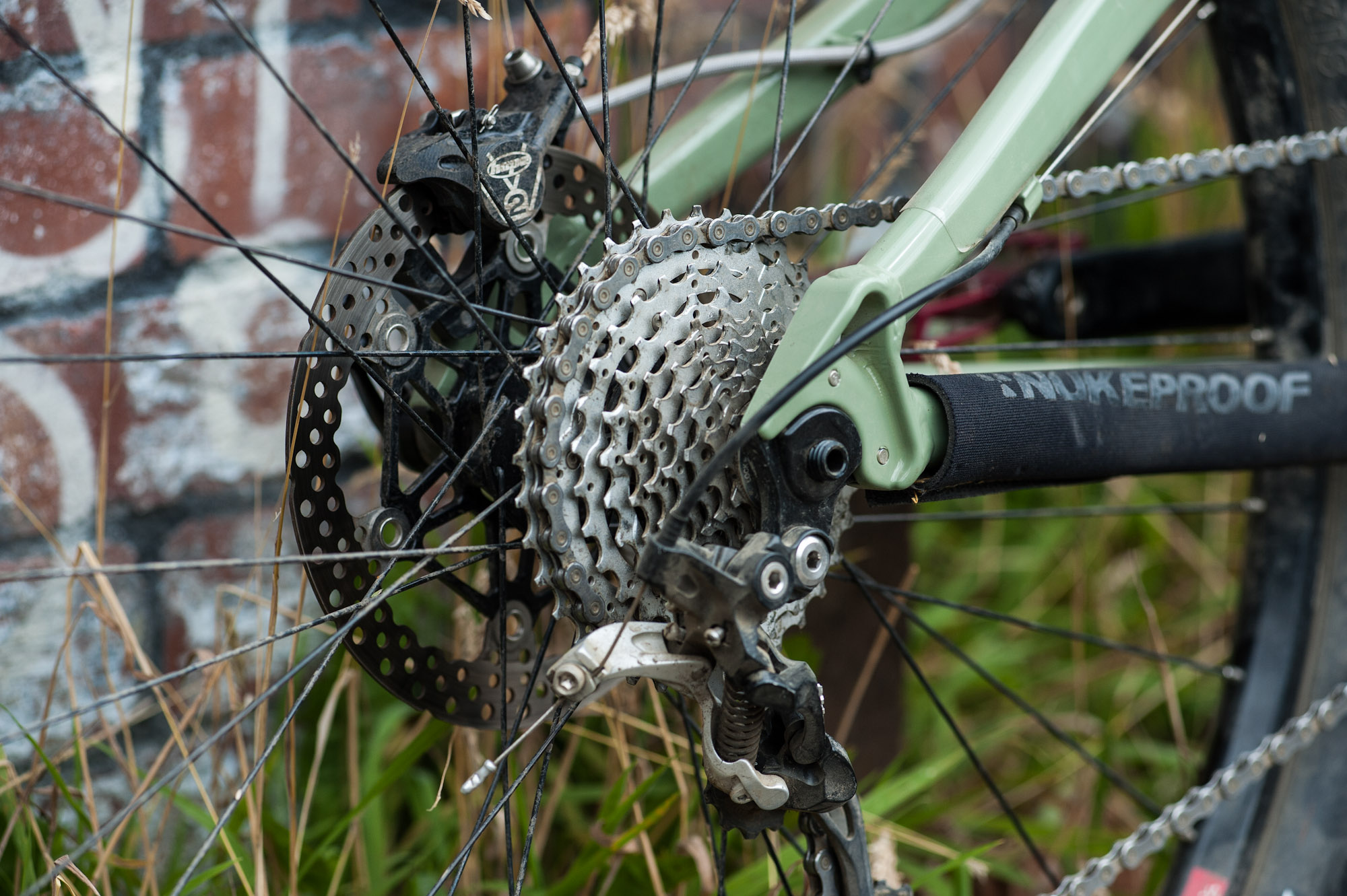
From the moment you swing a leg over the WFO you get the feeling that it’s going to be a bruiser. The overriding sensation through bars and pedals is of solidity. At around 32lbs for this build, it takes a bit of effort to get it up to speed but it’s not out of the field for a bike that’s aimed at more aggressive riding. Once you’ve wound the bike up, feedback from the back end is well muted but not entirely removed. Think of it as listening to the outside world with headphones on. There’s very little interference from the chain in any gear ratio either. It’s stiff too, with no errant motion or twangy strangeness detectable. Uphill it benefits from a smidgen of platform damping but it’s generally very well behaved. It’s certainly more of a sit-and-spin affair than a sprightly out of the saddle sprinter but the reward for effort is more than repaid when it’s time to go downhill.
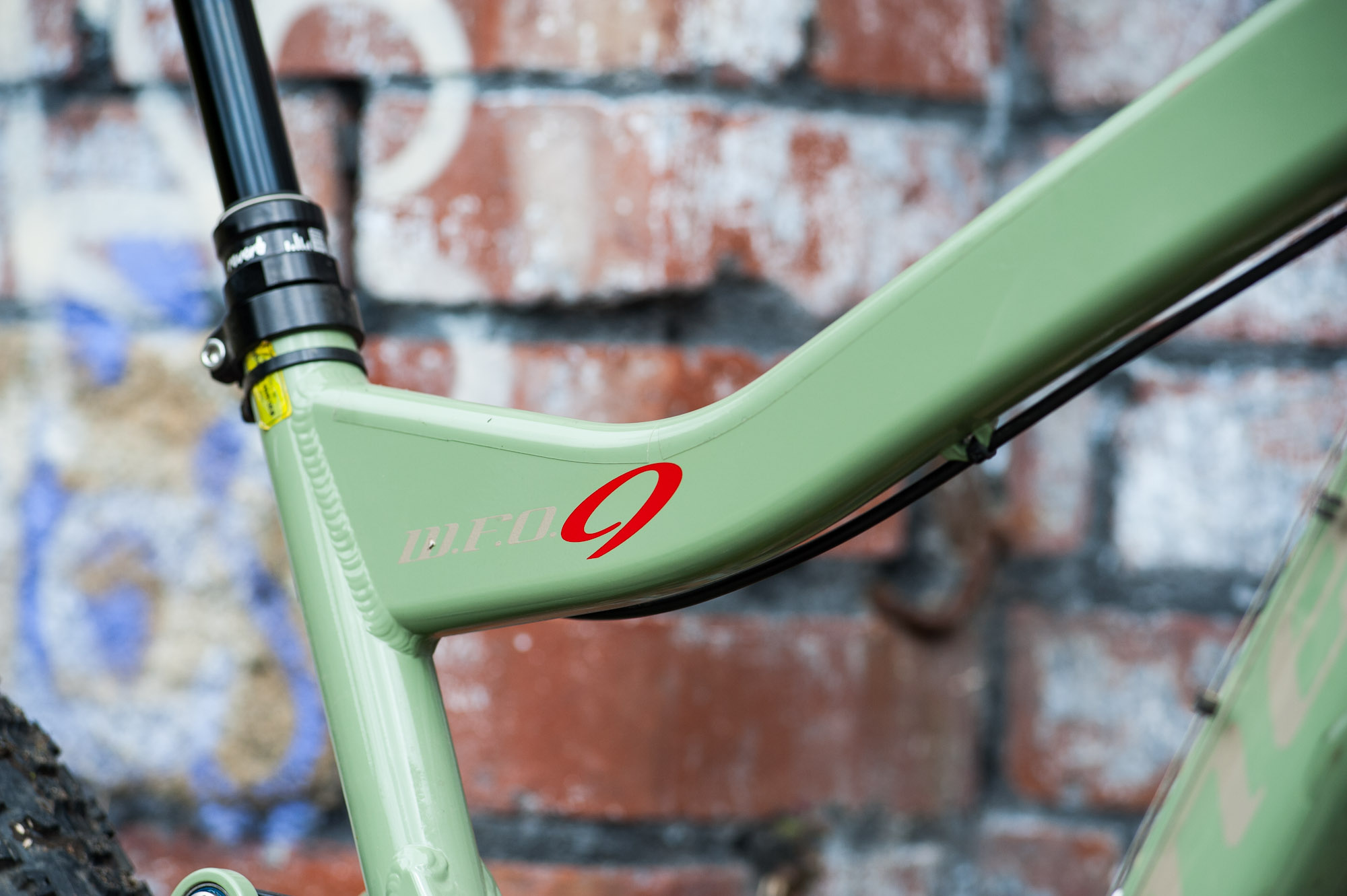
As the WFO accompanied me for a week on my summer holidays, I was in the enviable position of being able to take advantage of ski lifts and repeatedly hit the mix of high speed bermed runs and sneaky steep woodsy lines of Pila bike park in Italy.
Despite being in territory that is probably better suited to bikes with another couple of inches of travel at either end, the WFO held its own. Get it up to speed and it stops for nothing. It’s stable, with the accuracy of a trail bike but the solid sensation of something with much more travel. That’s partly due to the overall length of the bike and partly due to the was the combination of CVA suspension and big wheels quietly dispatching mid-size terrain and smaller chatter. At speed on downhill runs the spell is broken once you hit the fifth or sixth successive deep braking bump. It becomes quite obvious that this bike does only have 140mm of physical wheel movement to give, but it’s mighty impressive up until that extreme, ironing out all but the most severe terrain.
Just as impressive is the behaviour through high speed corners. The bike sits comfortably with masses of traction to spare, to the point that you find yourself getting caught out by the speed you’re carrying. On rapid, successive changes of direction you’ll need to put a fair amount more effort in to get it flowing but it’s not an impossible task; it’s extremely rewarding when you get it right.
Moving into the woods and onto trails that are best described as the fun bits in your local woods on steroids, the bike tracks true on cross rooted trails that’d have most bikes skipping and sliding nervously, ironing out minor obstacles and carrying speed well. Keep that speed up and the WFO provides a rather entertaining contradiction, being stable but also lively and willing to change tack at a moment’s notice, by no means averse to leaving the ground at the hint of a lip or manual through sections. Push it far enough to break traction and you’ll be rewarded with sublimely controllable drift and the involuntary release of wooping noises.
When things turn really steep and tight you start to find the limit of comfort however. On severe gradients and tight, slow speed corners that are challenging but perfectly do-able on a 160mm 26” bike, the relatively steep head angle, front end height and sheer length of the WFO made it start to feel markedly more cumbersome and the previous sensation of control is diminished. Of course, it’s hardly fair to think less of the WFO for its behaviour here; picky techy steep lines isn’t its prime concern, going bastard fast everywhere else is.
Overall: It’s the sort of bike that’d make you swear your favourite Lakes descent was half a mile shorter and you’d start questioning if the Peak District had had all the stones removed. It’s not the lightest but it’s a tough, predictable and fun trail steamroller that punches well above it’s weight – and it’ll give any of the current breed a run for their money in the handling stakes.
The Niner WFO 9 has never officially been brought into the UK, but Ulverston based bike shop DC Cycles have a demo bike and were kind enough to lend it to us for a bit of time – if you fancy trying it for yourself, get in touch with them…

